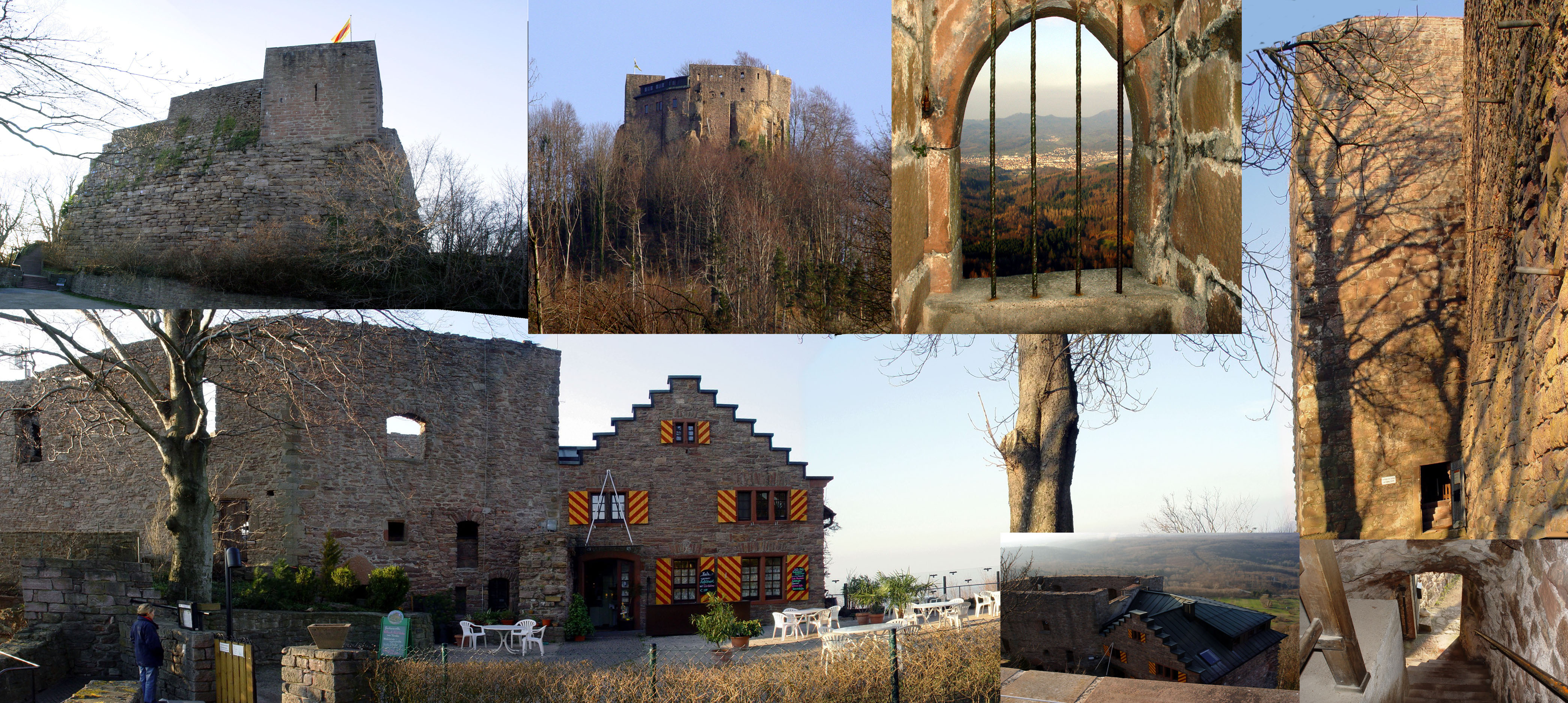Alt Eberstein on:
[Wikipedia]
[Google]
[Amazon]
The ruins of Alt-Eberstein are the remains of the former Schloss Eberstein (Eberstein Castle), located on a hill near the town of

Ebersteinburg
Ebersteinburg is an Ortsteil of Baden-Baden, Germany. At 426m in elevation it lies between the valleys of the Murg and Oos rivers. The village has a population of 1,300 and since 1972 has been part of the city of Baden-Baden.
By 1100CE the C ...
and directly upstream of the modern city of Baden-Baden
Baden-Baden () is a spa town in the states of Germany, state of Baden-Württemberg, south-western Germany, at the north-western border of the Black Forest mountain range on the small river Oos (river), Oos, ten kilometres (six miles) east of the ...
, in the state of Baden-Württemberg
Baden-Württemberg (; ), commonly shortened to BW or BaWü, is a German state () in Southwest Germany, east of the Rhine, which forms the southern part of Germany's western border with France. With more than 11.07 million inhabitants across a ...
, Germany
Germany,, officially the Federal Republic of Germany, is a country in Central Europe. It is the second most populous country in Europe after Russia, and the most populous member state of the European Union. Germany is situated betwe ...
. The original structure was built in 1100 as the primary residence of the Counts of Eberstein
The County of Eberstein was a territory within the Holy Roman Empire, situated in the southwest of modern Germany. From 1085 up into the 13th century, the Counts of Eberstein lived in the castle known today as Alt Eberstein which lies on a moun ...
, but by the end of the 16th century had been abandoned and much of the castle was torn down to provide materials for other structures. Presently it is a German national monument and a State Palace of Baden-Wuerttemberg.
History
A spur castle situated on a once-strategic mountain peak, the fortress was constructed as the seat of the Counts of Eberstein perhaps as early as 1100. The oldest part of the castle remaining intact are the ramparts. The first historical mention of the castle occurs in 1197 as ''Castrum Eberstein''. In the second half of the 13th century, the Ebersteins began construction on Castle Neu-Eberstein and the older seat declined in prominence and ultimately fell into disrepair; by 1573, it was uninhabited and thereafter became a quarry used by both the Eberstein descendants and locals. Starting in the 1800s, efforts have been made to preserve the site (which now consists solely of elements of the curtain wall and keep) and it presently one of the State Palaces and Gardens of Baden-Wuerttemberg, housing a restaurant and garden open to tourists.
References
* Gerhard Hoffmann: Die Burg Alt-Eberstein. In: Hugo Schneider (Hrsg.): Burgen und Schlösser in Mittelbaden. Schriftenreihe: Die Ortenau: Zeitschrift des Historischen Vereins für Mittelbaden, Band 64. Verlag des Historischen Vereins für Mittelbaden, Offenburg 1984. ISSN 0342-1503; * Alexander Antonow: Burgen des südwestdeutschen Raums im 13. und 14. Jahrhundert – unter besonderer Berücksichtigung der Schildmauer. Verlag Konkordia, Bühl/Baden 1977, , S. 106-108; *Dieter Buck: Burgen und Ruinen im nördlichen Schwarzwald – 33 Ausflüge auf den Spuren der Ritter. Konrad Theiss Verlag, Stuttgart 2002, , S. 37-38; {{Castles in Baden-Baden Royal residences in Baden-Württemberg Ruined castles in Germany Heritage sites in Baden-Württemberg